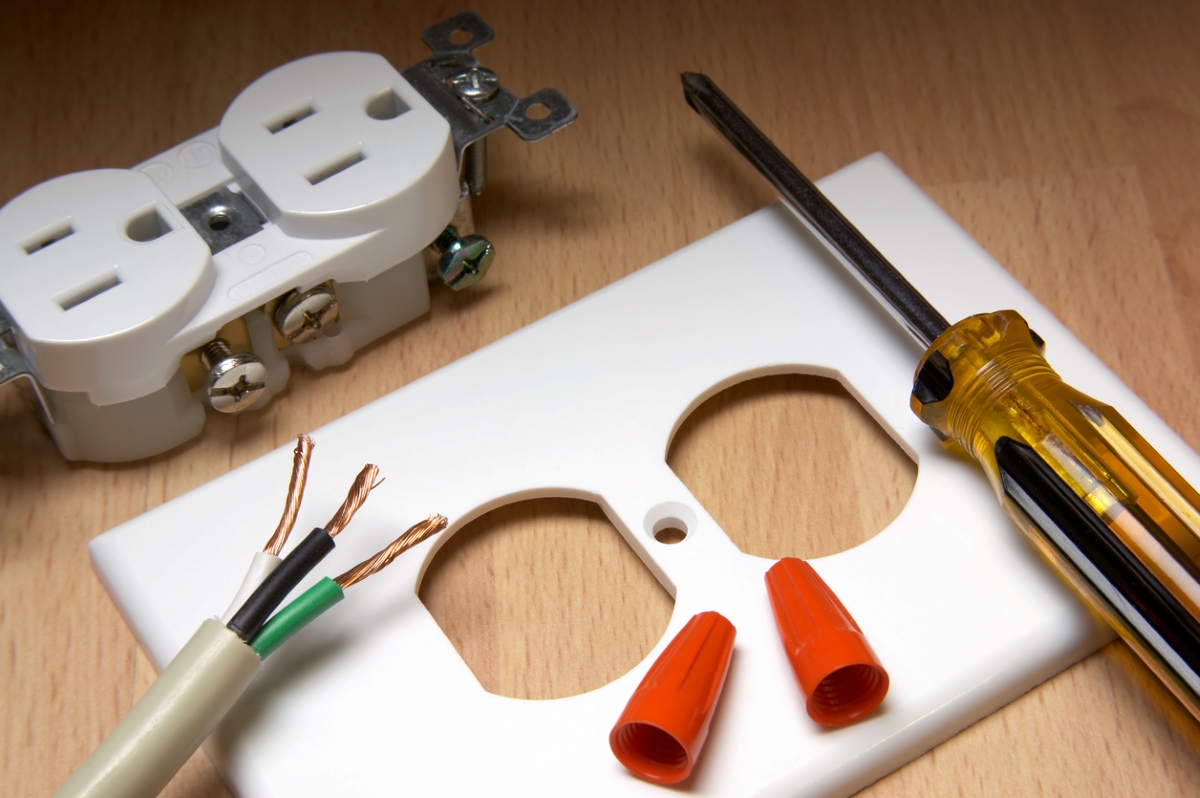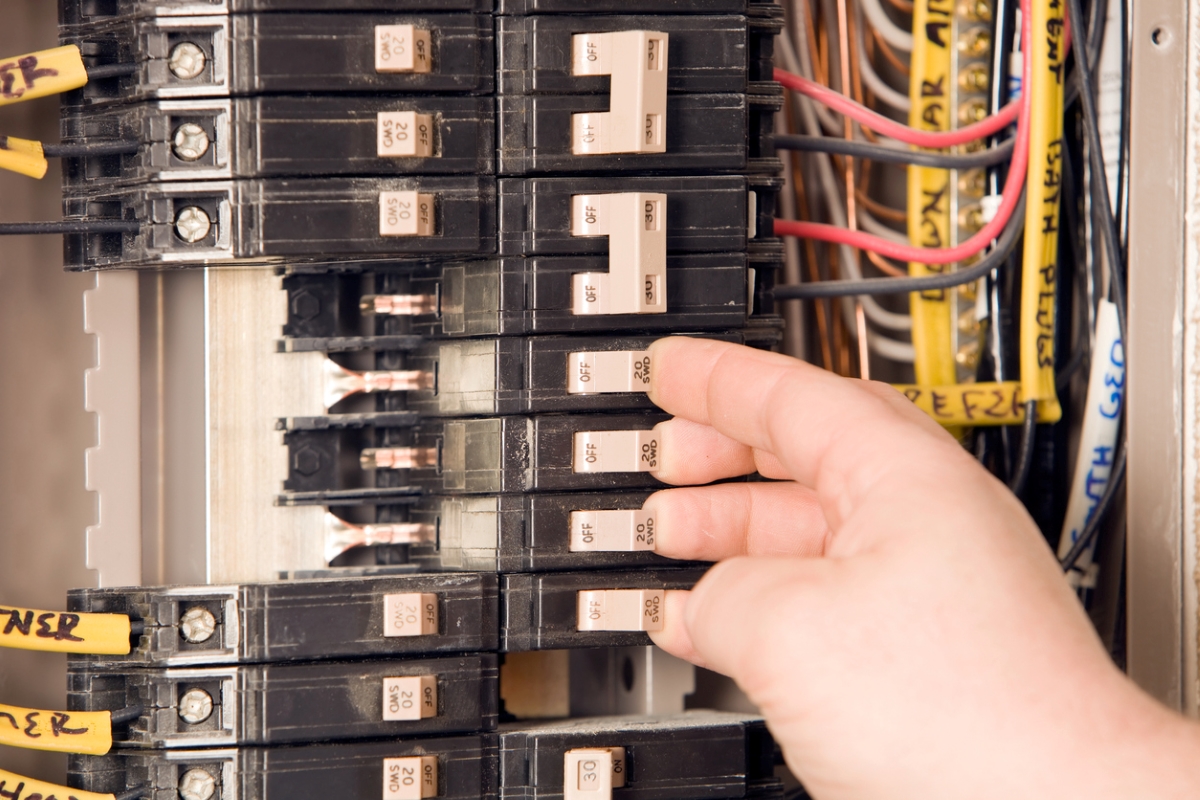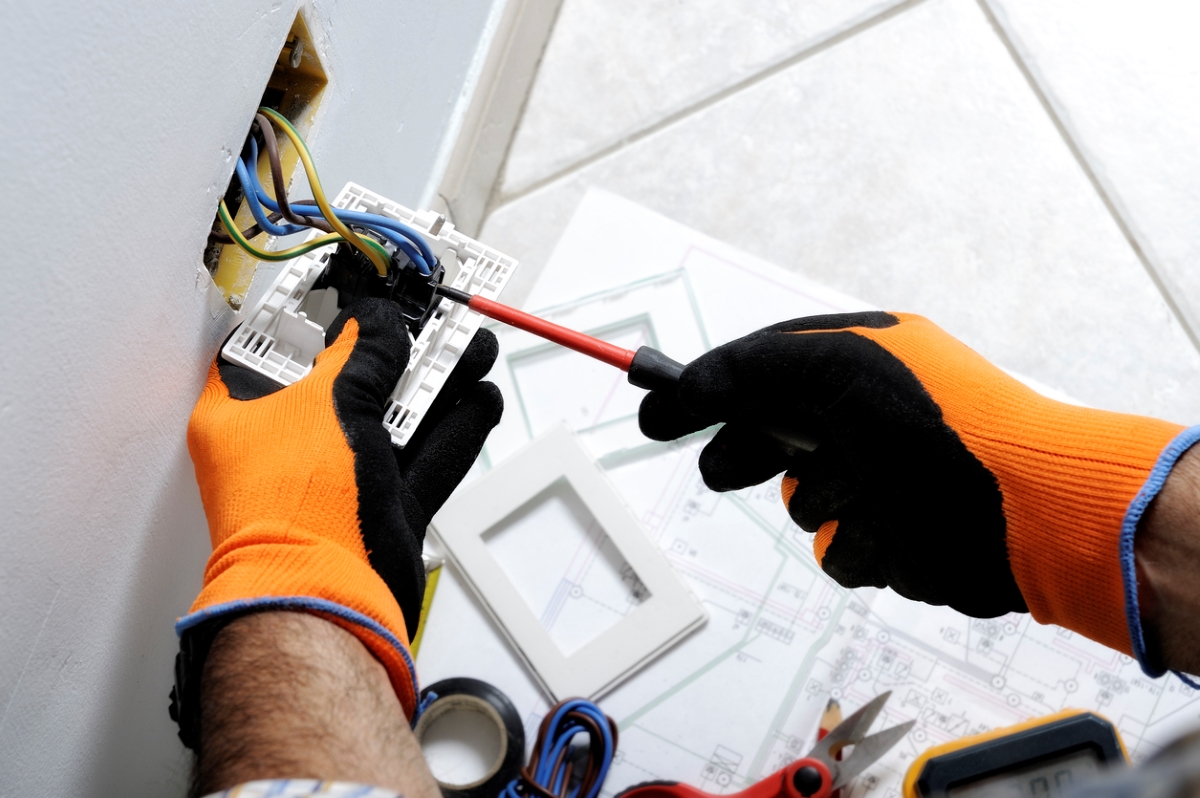

We may earn revenue from the products available on this page and participate in affiliate programs. Learn More ›
While virtually all DIY work carries some risk of harm, electrical work is in a class of its own. Many homeowners choose to hire a licensed professional to do any electrical tasks in their homes. That’s usually the safest bet. An article for the National Center for Biotechnology Information states that there are 1000 deaths per year in the United States due to electrocution and at least 30,000 non-fatal shock incidents per year.
The keys to successful DIY electric work are educating yourself, working within the law and your limits, and prioritizing safety above all. Read on for pro tips and advice from licensed professionals about taking on electrical tasks safely and successfully.
1. Respect electricity and what it can do.
The fact that humans have been able to harness electricity’s raw power and weave it into the fabric of our everyday lives is truly incredible. But because of our familiarity with electricity, we sometimes forget how hazardous it can be.
“Electricity is not a hobby. It’s a force to be respected,” says Gregory Bowman, a master electrician and owner of Concorde Electrical Services in Brooklyn, N.Y. “To truly respect something, you have to understand the power it has.”
Before attempting any electrical DIY tasks at home, take time to learn about electricity, such as the differences between amperage, voltage, and wattage. And recognize the effects that electrical shock can have on your body—including burns, altered heartbeat, loss of consciousness, heart attack, and even death.
RELATED: How Much Does a GFCI Outlet Cost to Install?
2. Learn the basics.

With a healthy respect for electricity in hand, DIYers looking to do electrical work at home should familiarize themselves with the fundamental concepts and components of residential wiring, including electrical panels, breakers, circuits, ground-fault circuit interrupters (GFCIs), and wiring. Equally important is an understanding of wire colors.
“Wires are different colors for a reason,” says Bowman. “It’s how the electrical system operates. So you need to be very familiar with the different colors associated with the wiring configuration where you live.”
If you are new to electrical DIY work, always start with something small, such as installing a doorbell. Once you’re experienced and confident with basic electrical tasks, you may choose to attempt a more complicated project, such as changing a light switch or outlet or installing a ceiling fan or light fixture.
RELATED: How to Wire an Outlet
3. Know what you can do legally.
The legality of homeowners doing electrical work varies between states and municipalities. Some municipalities give DIYers a lot of freedom to complete electrical tasks in their homes, while others, such as New York City (where Bowman’s company is located), prohibit homeowners from doing any electrical work in the home without hiring a licensed electrician.
Before starting an electrical project, call your local permit office to determine what you can and can’t do. You might need to apply for a permit or write a homeowner’s electrical exam to obtain a temporary license to do electrical work in your home. Municipalities that allow homeowners to do electrical work often require a third-party inspection to ensure the work is up to code, depending on the size and complexity of the project.
4. Work safely—turn off power!

Safety is the priority when working with electricity. Never work on any circuit that is live. Always turn off the power to a fixture or area where you are working by turning off the switch, or—even better—by turning off the circuit breaker. Use a tester frequently as you work to ensure there is no live current present. If you are working at a height, use a fiberglass ladder rather than a metal one, as fiberglass does not conduct electricity.
Bowman recommends going through the task in your mind first to consider what could go wrong and to think beyond getting shocked. For example, are you working on a ladder? Is it on level ground? Is it outside a doorway or near stairs? “Always think about alleviating any possible danger,” he states. Additionally, wear the proper personal protective equipment (PPE), such as safety glasses, gloves, and non-conductive footwear, and remove any metal jewelry.
RELATED: Electrical Panels 101
5. Have the right tools and equipment.
Make sure to have the right tools on hand for the job. Your hand tools should be insulated to protect against electrical shock and arcing. A basic electrical DIY toolkit might include:
- Straight-blade screwdriver
- Phillips-head screwdriver
- Wire cutter
- Wire stripper
- Pliers
- Utility knife
- Voltage tester
When buying parts for electrical projects, avoid trying to cut costs by using cheap or substandard components. Be sure to invest in high-quality electrical parts from reputable sources and brand names. Bowman recommends visiting your local electrical supply house, where knowledgeable staff can help you purchase products that are legal and usable in your area and appropriate for your project.
RELATED: The Best Voltage Testers, According to Our Tests
6. Always read the instructions.
Reading the manufacturer’s instructions for a fixture is essential to a seamless and safe installation. Neglecting this step can mean faulty installation, safety hazards, or damage to the fixture. Bowman stresses, “As a professional, one of the first things I have to do is see what the manufacturer recommends. The manufacturer may have specifications or installation methods they recommend for the fixture, and I have to follow that.” If professionals must rely on manufacturer directions, all the more reason for DIYers to do so. Pay close attention to provided instructions and resist the urge to try to figure things out on your own.
7. Stay organized.

Electrical work can result in a spread of tools, parts, wire clippings, and debris. Practice good housekeeping by staying organized. When putting a tool down, try to always put it back in the same spot. Keep garbage and debris away from small parts such as screws and wire caps, and keep small plastic bags handy to store small parts or screws you remove and want to keep. Take the time to clearly label important wires, as well as the electrical circuits in your panel. This will help you, future homeowners, and any professionals who do work in your home.
RELATED: How to Wire a Light Switch: Easy Steps for Single-Pole and 3-Way Switches
8. Be vigilant and purposeful.
When replacing a component such as a switch, take the time to see how it was wired before removing it. At the same time, realize that existing components may not have been wired correctly. Bowman states, “Something I tell the apprentices I work with is to never trust the one who came before you. For example, even though the wiring configuration in my area is black is hot and white is neutral, that doesn’t mean the one before me wired it that way. So always use a tester to confirm what the wiring is and whether it’s live,” he says.
RELATED: 10 OSHA-Approved Safety Tips to Practice at Home
9. Don’t cut corners.
Familiarize yourself with local and national electrical codes and be sure to comply with them. Even if an electrical project or component seems to work well, if an inspector determines that it’s not up to code, you might be required to remove and redo the work or hire a professional to do it properly. Avoid cutting corners with unsafe practices such as using an extension cord as a wiring method or running exposed wire inside a room instead of through a wall or conduit.
RELATED: Electrical Outlet Not Working? 8 Common Reasons Why and How to Fix Them
10. Know when to call a professional.

Completing one’s own electrical work can be satisfying, but there are some tasks that even the most savvy DIYer shouldn’t attempt. “Unlicensed electricians shouldn’t be in the electrical panel at all,” states Bowman. Changing breakers, replacing a panel, upgrading the service, and replacing obsolete or unsafe home wiring are examples of tasks that require expert skill and carry a much higher risk of harm, and so should be left to a licensed electrician.
Knowing when to seek professional help is the mark of a responsible DIYer. There’s no shame in hiring a licensed electrician to do any task you’re uncomfortable with. By being modest and knowing the limits of your understanding and skills, you can keep your home safe and avoid potentially costly mistakes.
